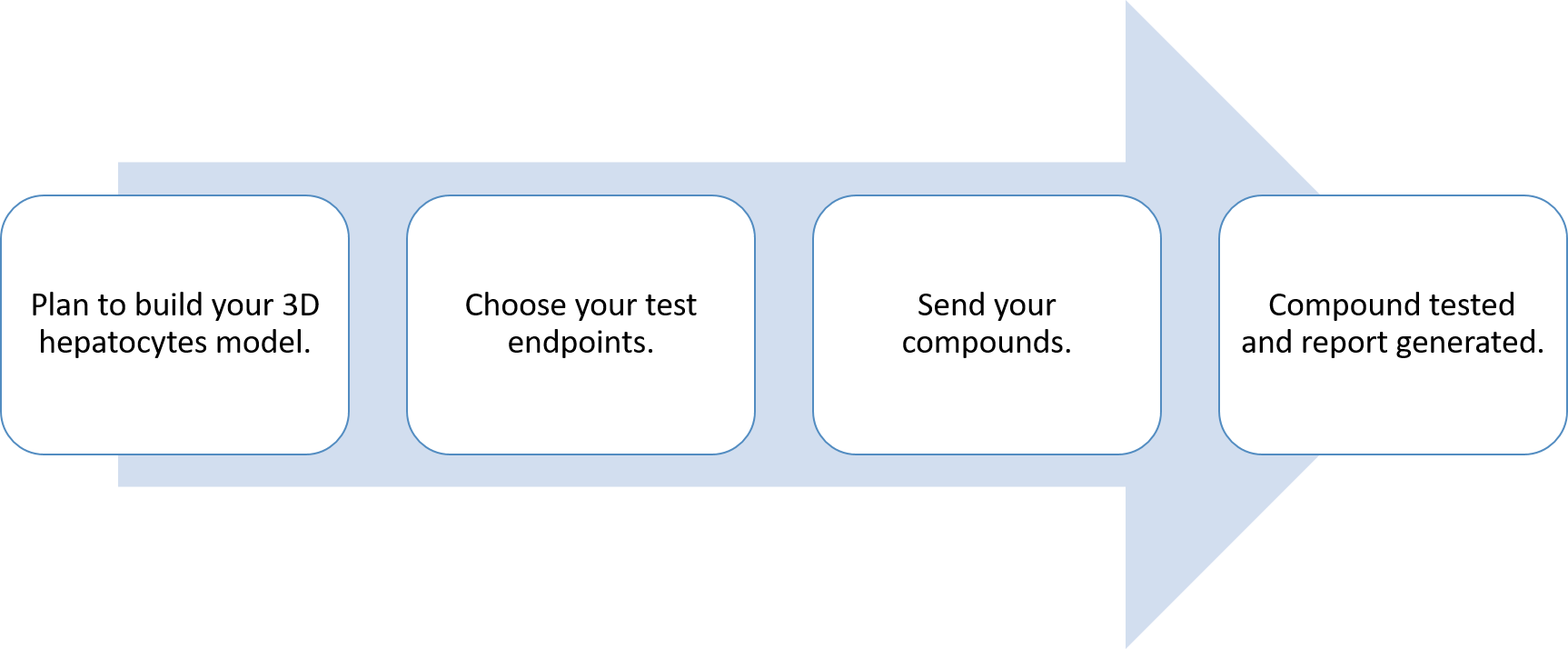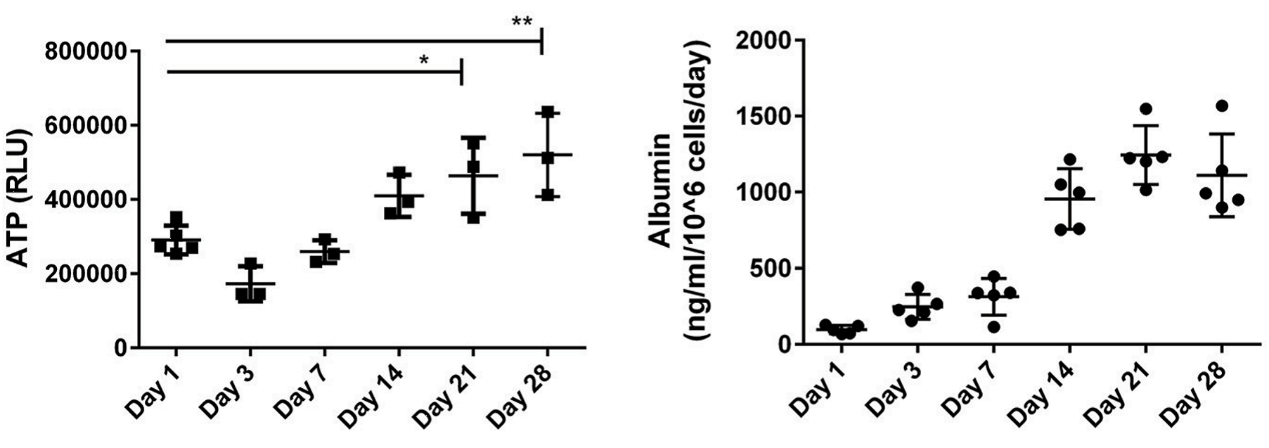3D Hepatotoxicity Service
- Features
- Workflow
- Applications
- Case Studies
- Explore Other Options

Drug-induced liver injury (DILI) is the leading cause of post-market drug withdrawals and the main challenge in drug development for the accurate prediction of the potential hepatotoxic nature of new pharmaceuticals of in vivo toxicity. The traditional methods for testing DILI are based on animal models and 2D gold standard monolayer culture systems. However, it is reported that less than half of animal tests can correctly predict the toxic effects because of the species-specific differences in hepatic metabolism and different sensitivity to toxic effects between experimental species and humans. Moreover, hepatocytes de-differentiate and rapidly lose their morphology within a few days, lose their liver specific functions, such as detoxification, enzymes activity, and the production of plasma proteins like albumin under 2D culture conditions. Thus, the relevance of such tests is being questioned nowadays. 3D culture systems bridge the gap between the clinical trials and traditional 2D tests, as 3D culture systems for hepatocytes maintain the hepatocyte function and delay the de-differentiation which are especially important during drug screening processes. The interaction of hepatocytes with a 3D environment preserves their function including drug metabolism, transport, and CYP induction. Therefore detection and prediction of hepatotoxicity by using 3D culture is an important approach in order to minimize the occurrence of DILI.
Creative Bioarray 3D hepatotoxicity assay service advantages
- Providing novel approaches to in vitro drug safety assessment that overcomes many limitations of existing models.
- Several physiologic model systems are available by using primary cells, hepatic cell lines or iPSC.
- Our liver toxicity tests cover most endpoints.
- The detection includes both acute and chronic toxicity.
- Spheroids of hepatocytes co-cultured with non-parenchymal cells better mimic the complex structure of human liver.
Workflow

Applications
Hepatocytes in 3D culture are the proper culture models for testing the liver-specific functions in vitro. The functional parameters such as CYP activity, ATP, albumin production, and enzyme content, etc., will be measured based on the customers' choices. Albumin and urea are synthesized by the liver. As so, they are markers for the ability of the liver to synthesize proteins. CYPs are involved in the metabolism of drugs, chemicals and endogenous substrates. CYP-mediated activation of drugs to toxic metabolites induces hepatotoxicity. Thus, a wide range of assays for liver in vitro models will evaluate your compounds by characterization hepatic functions and their drug-mediated responses.
Study examples
 Figure. The representative data analysis for the measurements of tissue ATP and the secreted factor albumin when compared 2D culture to 3D culture.
Figure. The representative data analysis for the measurements of tissue ATP and the secreted factor albumin when compared 2D culture to 3D culture.
Quotations and ordering
Our customer service representatives are available 24hr a day!
References
- Bachmann, A., et al. 3D Cultivation Techniques for Primary Human Hepatocytes. Microarrays. 2015, 4.1: 64-83.
- Nguyen, D. G., et al. Bioprinted 3D primary liver tissues allow assessment of organ-level response to clinical drug induced toxicity in vitro. PLoS One. 2016, 11.7: e0158674.
- Gunness, P., et al. 3D organotypic cultures of human HepaRG cells: a tool for in vitro toxicity studies. Toxicological sciences. 2013, 133.1: 67-78.